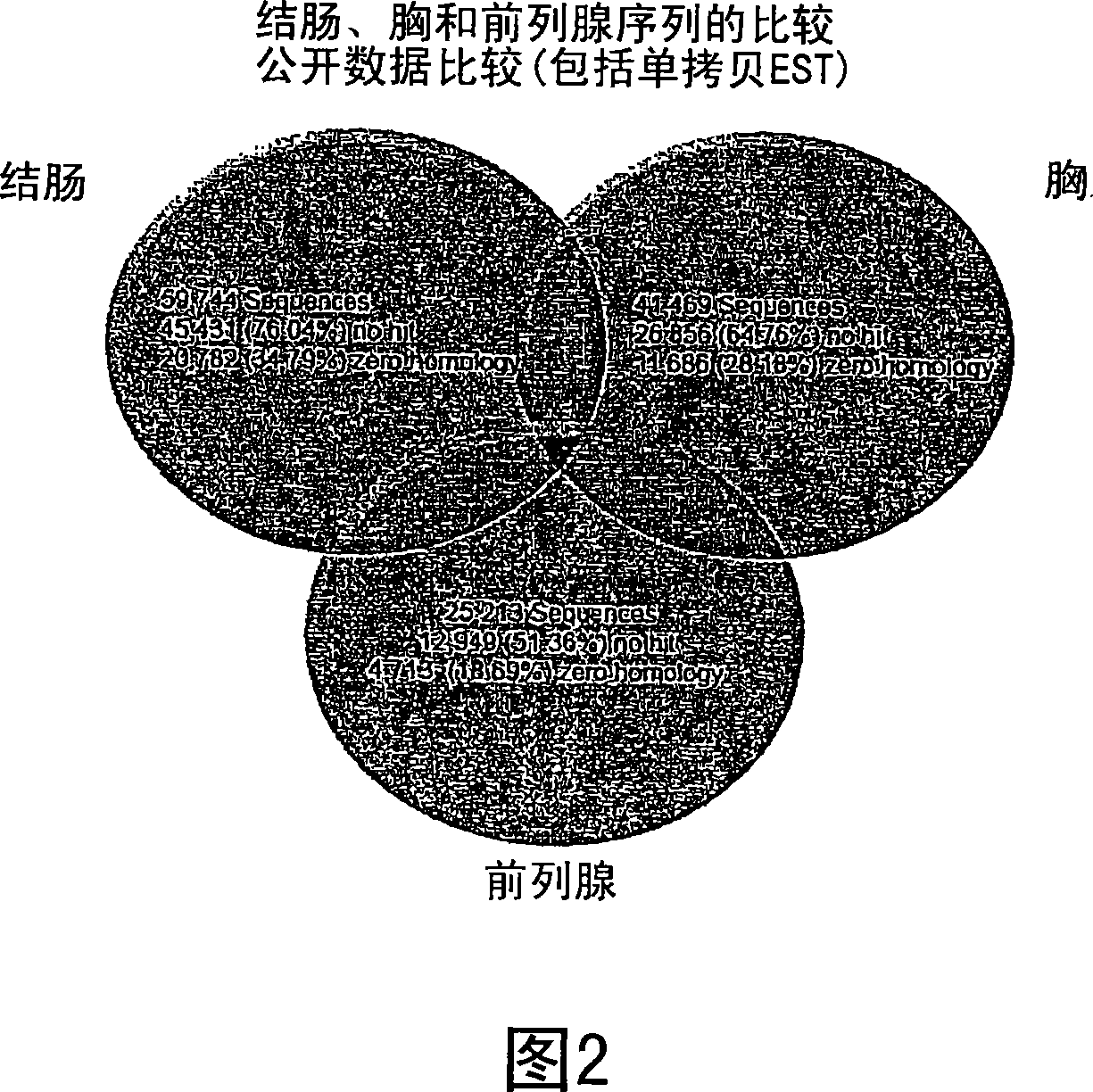Transcriptome microarray technology and methods of using the same
A transcriptome and array technology, applied in the field of gene and RNA expression arrays, can solve problems such as difficult data association and general array difficulties, so as to improve safety, reduce the possibility of adverse drug reactions, and improve accuracy Effect
- Summary
- Abstract
- Description
- Claims
- Application Information
AI Technical Summary
Problems solved by technology
Method used
Image
Examples
Embodiment 1
[0260] Example 1: Initial List of Colorectal Cancer Transcriptome Sequences
[0261] The following method was used to obtain initial colorectal cancer transcriptome array sequences, which are disclosed in European Patent Applications EP 04105479.2, EP 04105482.6, EP 04105483.4, EP 04105484.2, EP04105507.0 and EP04105485.9 and US Provisional Patent Applications 60 / 662,276 and 60 / 700,293 in.
[0262] Materials and methods
[0263] public data screening
[0264] All published expressed sequence tags (ESTs) from all downloaded databases were restored to FASTA format and all 921 databases were concatenated into a single sequence file containing 272,686 single ESTs. These ESTs were then screened using a combination of specific filters in the Paracel Filtering Package (PFP) (available at www.paracel.com) to ensure that no undesired sequence elements entered the pooling procedure. Select settings to mask low-complexity regions, vector sequences, and repetitive sequences. Sequen...
Embodiment 2
[0274] Example 2: Further Characterization of Colorectal Cancer Sequences
[0275] Additional colorectal sequence information was obtained through detection on microarrays containing publicly available information to identify additional transcripts expressed in colorectal tissue. These sequences complement the starting transcriptome array sequence information, providing a more complete array representative of the colorectal cancer transcriptome.
[0276] method
[0277]Forty RNAs from colorectal tissues (27 tumor and 13 normal) were labeled and hybridized to microarrays containing publicly available information. Transcript lists were obtained from these arrays for those targets present in at least one of the arrays and described in the Background Art (ie, identifying transcripts expressed in at least one colorectal sample).
[0278] Initial work on arrays using GI or probeset-associated numbering showed some discrepancies between the target sequence and the full sequence o...
Embodiment 3
[0284] Example 3: Antisense Sequences of Colorectal Cancer Transcriptome
[0285] With increasing scientific communication interest in the role of endogenous antisense RNA transcripts, colorectal cancer databases were checked for the presence of antisense transcripts.
[0286] method
[0287] After pooling, internal and public data contigs were BLASTed against the Genbank NT database for annotation purposes and to identify sequence orientation. In cases where contigs were identified as being in the opposite orientation compared to those listed in Genbank, the data were back-supplemented and both orientations were included in the final data set. Thus, combining the antisense and corresponding sense transcripts resulted in a gene sequence of 5,672 transcripts (Gene List H).
PUM
 Login to View More
Login to View More Abstract
Description
Claims
Application Information
 Login to View More
Login to View More - R&D
- Intellectual Property
- Life Sciences
- Materials
- Tech Scout
- Unparalleled Data Quality
- Higher Quality Content
- 60% Fewer Hallucinations
Browse by: Latest US Patents, China's latest patents, Technical Efficacy Thesaurus, Application Domain, Technology Topic, Popular Technical Reports.
© 2025 PatSnap. All rights reserved.Legal|Privacy policy|Modern Slavery Act Transparency Statement|Sitemap|About US| Contact US: help@patsnap.com


